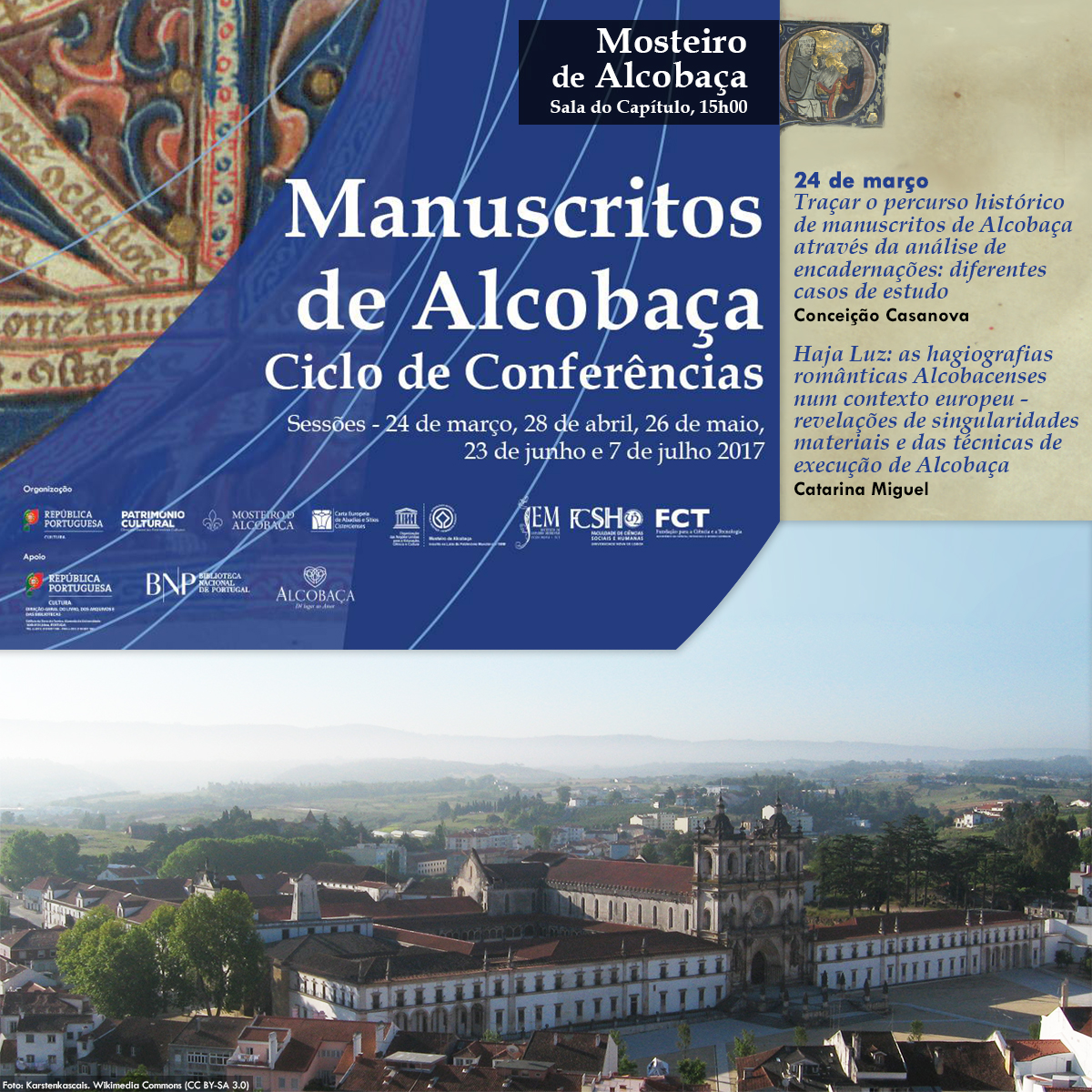Conference Cycle: Manuscritos de Alcobaça
1th Session
24.03.2017
Mosteiro de Alcobaça, Sala do Capítulo

The first session of the Conference Cycle: Manuscritos de Alcobaça will take place on March 24th, and will feature lectures by researchers Conceição Casanova and Catarina Miguel:
1st Conference
“Traçar o percurso histórico de manuscritos de Alcobaça através da análise de encadernações: diferentes casos de estudo”, by Conceição Casanova (Museus de Lisboa, UL; Departamento de Conservação e Restauro e REQUIMTE da Faculdade de Ciências e Tecnologia da Universidade Nova de Lisboa; Instituto de Estudos Medievais da Faculdade de Ciências Sociais e Humanas da Universidade Nova de Lisboa)
The place of music books in the establishment of Cistercian monastic worship, with special reference to the antiphonaries and processionals from Alcobaça.
2nd Conference
“Haja Luz: as hagiografias românicas Alcobacenses num contexto europeu – revelações de singularidades materiais e das técnicas de execução de Alcobaça”, by Catarina Miguel (Laboratório Hércules, Universidade de Évora)
The Alcobaça collection has long been presented as exceptional in the context of illuminated Romanesque manuscripts produced in Portugal. Many iconographic comparisons have been made with other international collections, but never before has it been possible to carry out a comparative study of Alcobaça’s materials and production techniques in a European context. This paper will present some of the results of the systematic study of materials and production techniques of a set of Cistercian manuscripts from three of the most exceptional collections of medieval manuscripts: Alcobaça – the most important Portuguese Cistercian collection; the Vatican – the most exceptional manuscript collection; and the Troyes collection – which includes the largest collection of Cistercian manuscripts produced in Clairvaux. The results obtained show the exceptionality of manuscript production in Alcobaça at the beginning of the activity of its scriptorium, while at the same time supporting the idea of the existence of a sharing of knowledge and materials between Christians and Muslims that, at the time, integrated the Portuguese territory. On the other hand, the comparison of a set of Alcobaça hagiographies with some of the most emblematic manuscripts of the Clairvaux collection (namely, with the two volumes of the Great Bible of Clairvaux), showed the exceptionality of the artistic execution and the materials used in the production of the Alcobaça illuminations, placing these manuscripts among the best produced at the time in the mother abbey of Clairvaux.
